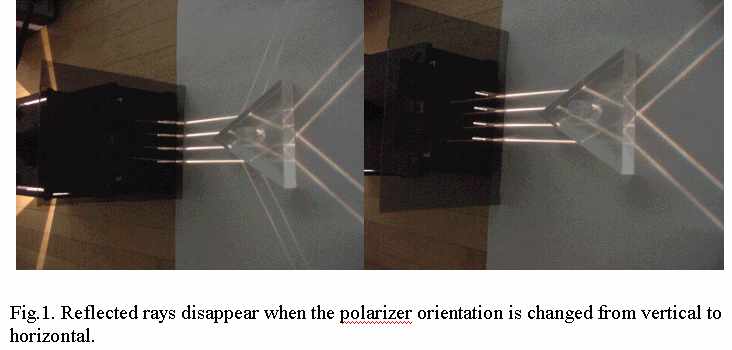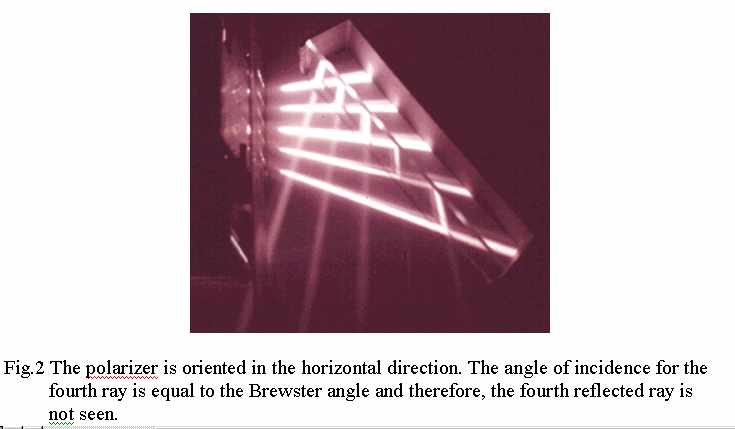P. J. Ouseph
Physics Department University of Louisville Louisville,
KY 40206
502 852 0918 Fax 502 852 0742
E-mail pjouse01@louisville.edu
Advanced Laboratory and/or Demonstration Apparatus
Apparatus Title: Polarization of reflected light
Abstract : The apparatus consists of a ray box,
an acrylic prism, a glass slide, and a polarizing sheet. The apparatus
can demonstrate polarization of reflected light at the Brewster angle and
variation of the level of polarization with angle of incidence.
Description Polarization of Reflected Light

A ray box that gives parallel rays of light from one
end and a diverging beam from the other end is used in this apparaus. As
shown in Fig.1 an acrylic prism is placed in the parallel rays symmetrically.
The angle of incidence of the rays falling on the prism is 600, very close
to the Brewster angle of acrylic (57.50), and, therefore, the reflected
rays are almost completely polarized. The polarization can be demonstrated
by placing the polarizer in front of the ray box and changing its orientation.
When the polarizer is held horizontally the reflected light disappears
showing that the reflected light is polarized in the perpendicular direction
(Fig.1).

Angular dependence of polarization of reflected light
can be demonstrated with the help of the diverging rays. A glass reflector
(microscope slide) is placed so that the angle of incidence of the rays
falling on the glass is lower than, equal to, and higher than the Brewster
angle. When the polarizer is held horizontally the fourth ray of light
disappears (Fig.3) because the angle of incidence is equal to Brewster
angle. The other rays with angles of incidence less than and greater than
Brewster angle are visible because they are not completely polarized.
Conclusions
This is the cheapest, easiest, and quickest way of demonstrating
the different aspects of polarization of reflected light.

